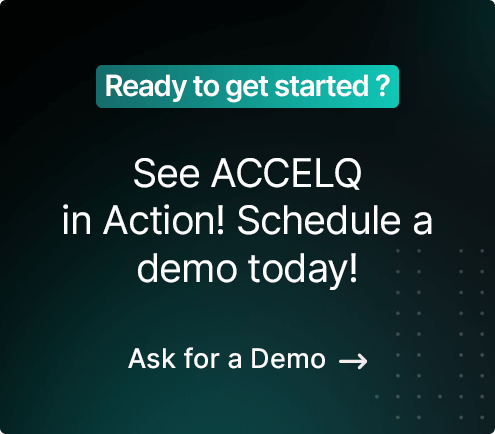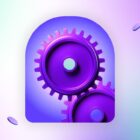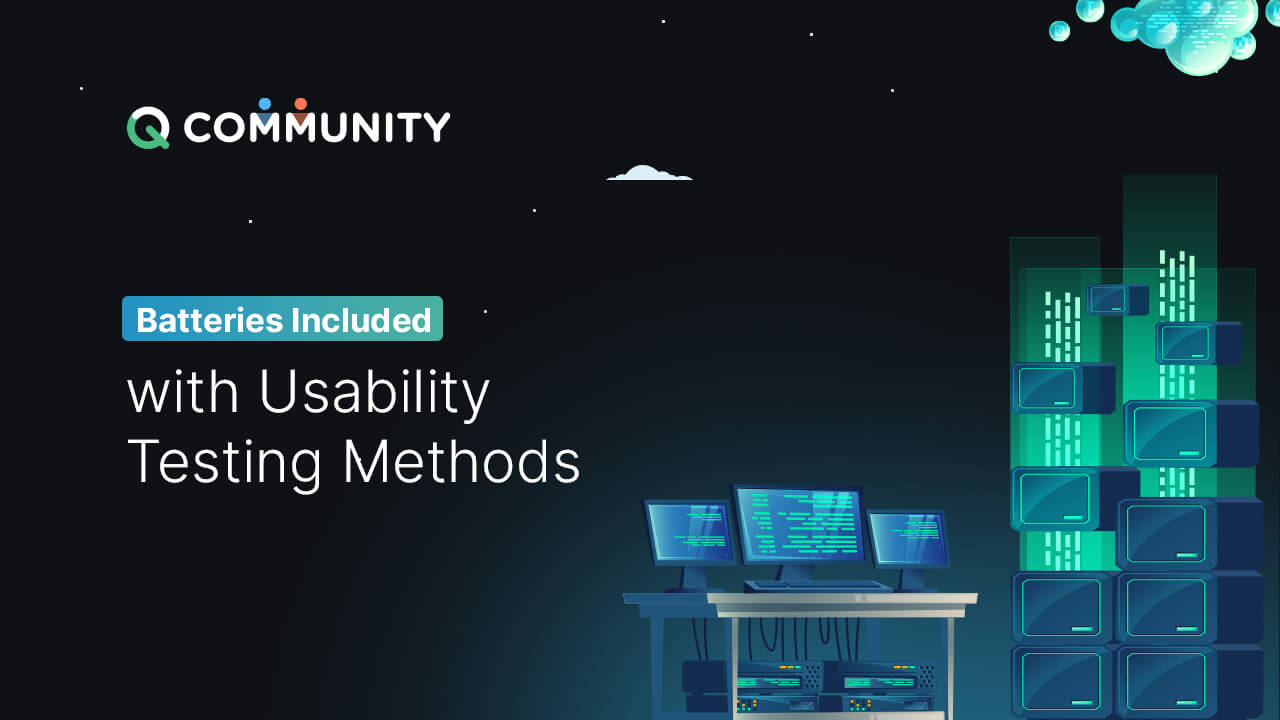
Software testing is an essential part of all technology areas and is constantly changing. Imagine unpacking a new device, using it the same day, and getting productivity the same day. We like the products that are ready to use and "batteries included." No one wants to spend weeks training or learning how to use their new operating system, so we want to do productive work right away.
The biggest challenge for organizations looking to implement an effective software quality program is realizing that they must do more than focus on code quality. Instead, we must focus on the quality of the entire system and the processes by which it is developed and maintained. Of course, software testing is essential, but if it doesn't incorporate the users' perspective, the result could be a costly blind spot.
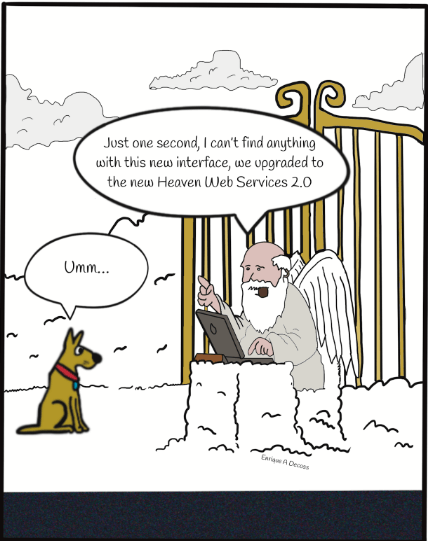
When we talk about users' perspectives, we want to focus on Usability testing (ISO DIS 9241-11). First, we need to get all the feedback into a report that reflects the application's genuine usability. As companies or startups, we can conduct Usability tests at any stage during our Agile process, from the beginning of the prototype (MVP) to the late phases via alpha, beta testing, or canary testing. Lastly, we should consider that user feedback is always beneficial for the long-term viability of a brand.
Usability testing vs. User Research vs. UX Testing
It could be easy to confuse software usability testing with similar approaches, the same way some people confuse Quality Assurance and Quality Control. However, sometimes, several can be synonymous.
Let's start by understanding User research; User research incorporates usability testing and approaches like interviews, surveys, and focus groups on besting identify the behavior and needs of a product's intended customer. Like usability testing, user research alters when it can occur relative to application development, especially given different development methodologies. Nevertheless, the earlier an organization can incorporate user research, the better it can document and strategize according to that insight.
When we consider UX testing, Usability testing is one aspect of UX testing. However, UX testing goes beyond just usability to understand how the customer feels about their experience with a product, which might even include gauging their emotions or impression of the brand as a whole. For example, suppose a coffee shop wanted to gather product feedback from real customers for its new mobile app. In that case, usability testing might uncover difficulties in joining or navigating the app. In contrast, UX testing would explain how the user feels about the app's colors or how to navigate the multiple areas of the app.
Understanding multiple Usability Testing methods/techniques
There is no particular way to run software usability testing. Instead, the most helpful insight for the application is the way to go, which can vary depending on the company. Therefore, the organization should consider its objectives and preferred outcomes when establishing which usability testing methods to use and how best to approach the task.
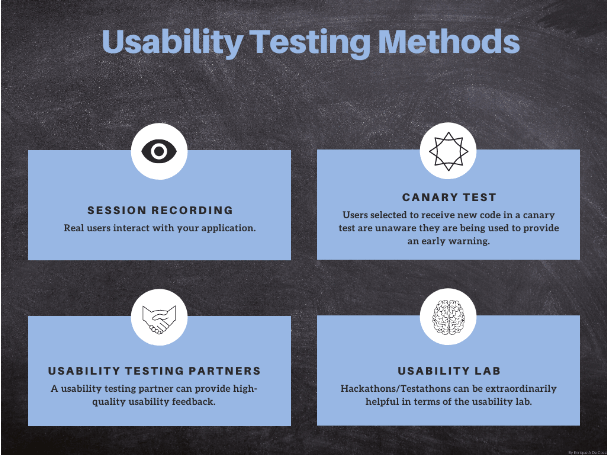
I want to separate the user research approach from the usability testing; I won't cover the Moderated, Unmoderated, Explorative, and Comparative.
Let's identify some specific usability test methods and techniques that we can use:
- Session recording
- Usability lab
- Canary tests
- Usability testing partners
Session recording
This method can help review the participant's on-screen actions, for example, how quickly they navigate or click. We might also project the participant's screen onto another device or monitor for live assessment. Various online testing tools allow you to observe user behavior on your application or website remotely; some let you pay participants to take short tests, while others monitor the behavior of real users as they interact with your applications.
Get Started for free today.
No credit card needed | No obligations
Usability lab
It refers to usability studies conducted in a controlled lab environment that enables the organization to gather all the feedback they need. The companies carefully maintain all devices and variables to keep a stable environment in this setting. The usability lab typically includes several recording devices, a one-way mirror, and a means to communicate with the participant. However, usability labs typically include lighting and temperature controls, plus comfortable furniture or other amenities to keep participants relaxed. In-person hackathons/testathons can be extraordinarily helpful in terms of usability lab.
Canary tests
A canary is a push of code changes to a small group of end-users unknowing that they are receiving new code. The canary is distributed to a small number of users; its impact is moderately small, and changes can be reversed quickly if the new code proves to be buggy. The canary test was selected to describe the code push to a subset of end-users similar to canaries once used in coal mining to alert miners when toxic gases reached dangerous levels. Like the canary in a coal mine, the end-user selected to receive new code in a canary test is unaware they are being used to provide an early warning.
Usability testing partners
Usability testing partners can conduct testing on behalf of the companies. While this usability testing method involves additional costs, a partner typically offers expertise that the company does not have in-house. Additionally, the usability or UX testing partner typically has access to a broad pool of potential participants, which it can cultivate based on the client's needs. Finally, a usability testing partner can provide high-quality usability feedback that can overcome this expense and let the organization focus on other objectives.
These are just several usability testing methods. In addition, UX researchers might take a variety of explorative or comparative approaches to learn about how end-users feel about and interact with an application.
Be part of the lively group discussions covering various topics around Web, API, Mobile Test automation, and more...
Fundamental Benefits of Usability testing
We should offer extraordinary experiences to create relaxation or excitement, and the key is to add value for the end-users/customers. In my experience, companies must buy into the benefits of usability testing. If we can't provide an engaging experience, also we should invest in UX testing to get value out of the approach.
Software Usability Testing can provide:
- Identify issues with complex end-users scenarios
- Confirm your applications meet consumer expectations
- Improve user experience
- Validate your MVP/prototype
- Gain confidence in user satisfaction with an application before releasing
- Catch minor UX errors
The companies can also iteratively approach usability testing. In this case, the organizations might conduct usability tests early with a shift left usability approach. Doing that enables the organization to learn granular information about the application as they build it.
Final Thoughts
Every digital product should experience usability testing to guarantee it is a good fit for the intended audience. When customers are dissatisfied with a defective application, they often will not give it a second chance; that's revenue lost, potentially forever. Every application is capable of improvement, and usability or UX testing helps uncover those points of variance hidden from the standard testing methods.
In my experience with multiple companies, development and testing budgets are tight, making it challenging to set extra money for usability testing and user research. Usability testing can deliver incredible valuable insights and improve users' experiences. Imagine the risk of providing buggy applications. Give no-code testing tool ACCELQ a try and focus on usability testing that matters.
Happy Bug Hunting
Related Posts
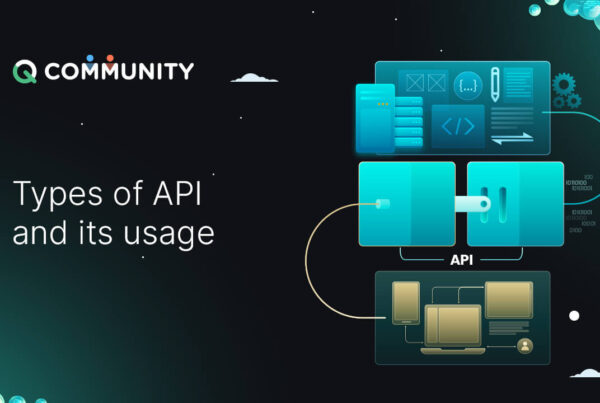 Types of API protocols- REST, SOAP, graphQL, gRPC
Types of API protocols- REST, SOAP, graphQL, gRPC
Types of API protocols- REST, SOAP, graphQL, gRPC
 A tester’s automation suitcase!
A tester’s automation suitcase!































